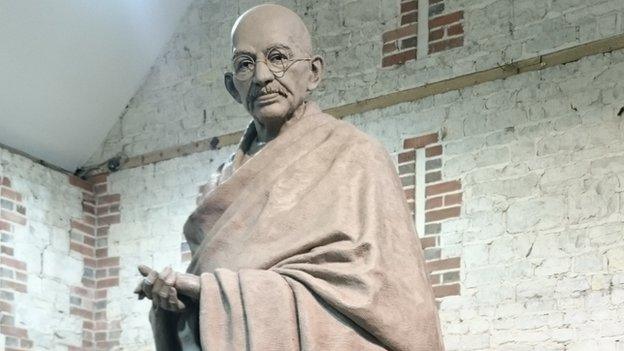Statue of Mahatma Gandhi unveiled in Parliament Square
- Published
Gopal Gandhi paid tribute to his grandfather at the unveiling
A statue has been unveiled of Mahatma Gandhi in London's Parliament Square.
The unveiling of the 9ft (2.7m) bronze statue marks 100 years since Gandhi returned to India from South Africa to begin his struggle for independence.
The Gandhi Statue Memorial Trust raised more than £1m for the work which was described as a "magnificent tribute".
The statue was unveiled by Indian finance minister, Shri Arun Jaitley, in a ceremony which also involved Gandhi's grandson, Gopalkrishna Gandhi.
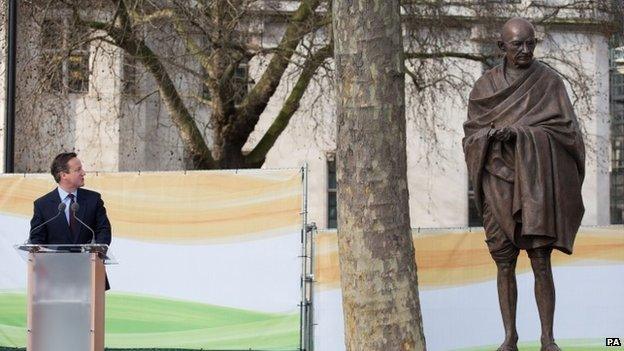
Prime Minister David Cameron spoke at the unveiling of the statue which he called a "magnificent tribute"
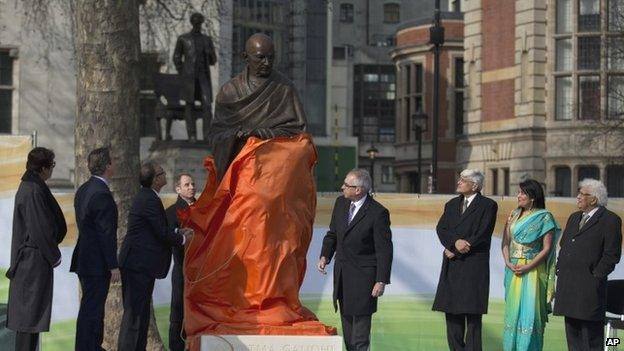
India's Finance Minister Arun Jaitley unveiled the statue in Parliament Square
British sculptor, Philip Jackson, was commissioned to create the work with his previous pieces including statues of the Queen Mother and Bomber Command.
He said he was inspired by photographs of the civil rights leader outside 10 Downing Street on a visit in 1931.
Prime Minister David Cameron said: "This statue is a magnificent tribute to one of the most towering figures in the history of world politics and by putting Mahatma Gandhi in this famous square we are giving him an eternal home in our country."
Gandhi was known for his use of non-violent protest and undertook various hunger strikes to protest against the oppression of India's poorest classes.

Who was Gandhi?
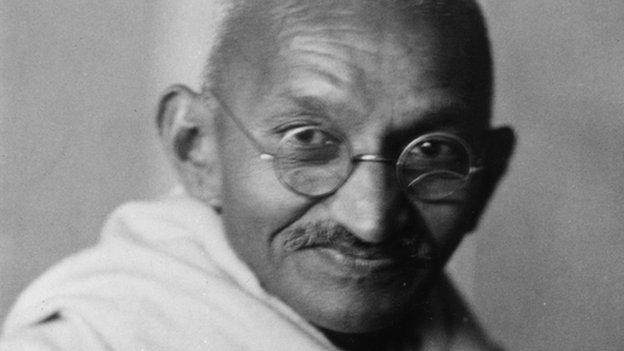
Born on 2 October 1869 in Porbandar, Gujarat, India
Leader of the Indian nationalist movement against British rule
Known for his devout Hindu faith and ascetic lifestyle, often dressing only in a loincloth and shawl
Imprisoned several times during his pursuit of non-violent protest
Undertook a number of hunger strikes to protest against the oppression of India's poorest classes
Often called "Mahatma", which means "great-souled", or, in India, "Bapu", which means "father"
Assassinated on 30 January 1948 in Delhi, by Nathuram Godse

- Published13 March 2015
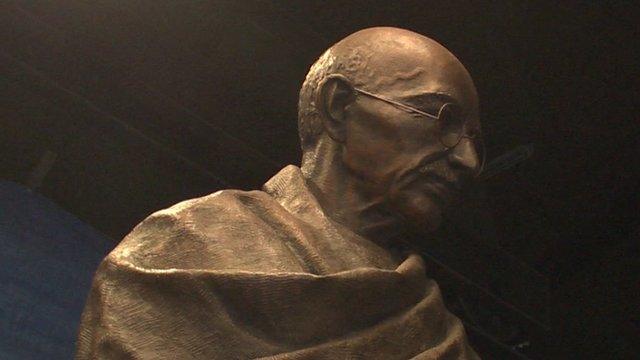
- Published13 March 2015
